The last Italian Tank for 60 years
The M15/42 medium tank (carro armato medio) also called M.42, was the ultimate evolution of the M13/40 designed and produced by Ansaldo. In July 1942, the problems and defects of the M13/40 and M14/41 has been well identified. The development of a tank equipped with a better engine started, with an upgraded main gun. In March 1943, the prototype of the M15/42 was approved for production. However that late into the war, only about eighty could be manufactured before the Italian capitlation.The M15/42 was armed with an upgraded version of the same 47 mm cannon derived from the 47/32 Modello 1935. However the armor and its construction method was not changed, while the suspensions remained the same. Basically by the time it entered service, the M15/42 was obsolete. It was only seen in action during the siege of Rome, fighting clashes with the fascists.
Manufacturing of the new tank was interrupted by the Cassibile armistice of September 3. Soon after Nazi Germany captured the faclity and transferred it to the Italian Social Republic. Thelatter used the M15/42 as their main tank until the end of the war.
The M15/42 chasssalso served as an anti-aircraft self-propelled vehicle, and the 105/25 M.43, probably the best Italian tank hunter of the war.
Development
In December 1940, development of a heavy tank was tasked, but it took years, so in 1942 it became necessary to look for an alternative solution to upgrade and replace the noew obsolete M13/40, or to remedy to the low production rate by simplifying the design. There were negocations with Nazi Germany from officials of the Regia Esercito in the winter of 1940-1941, which ended fruitless as they were asked to sell 800 French tanks previously captured.In June 1941, negociations led to an opening, as it was assumed a licence to manufacture the Panzer III would be obtained. However, the Germans put so many conditions, like providing half of the components, optics and weapons at standard price, that the project aborted. In the same time indeed, the consortium FIAT-Ansaldo actively lobbied the Fascist regime officials, assuring them they could produce a heavier tank that was at the same time simpler and less expensive to manufacture. They even added it would be operational by early 1942. However by February 1942, Germany proposed the Panzer IV licence, but Italy declined it in the spring of 1942.
Between the long gestation of the Carro pesante M26/40 and negotiations dragging for ever with the Germans, the Royal Army already in the summer of 1941 decided to simply upgrade the M13/40, notbly to face superior British armor in the desert of North africa. This was to be the M14/41.
In July 1942, a technical team assembled by chief engineer Giuseppe Rosini examined the M14/41 to try to solve the two major issues of the design, propulsion and armament. Since 1940, the 47/32 Mod. 1935 cannon has been improved already, with a barrel lengthened to 40 calibers. However it was planned to upgrade the M14/41 and M13/40 but development of the new ordnance was slowed down notably by the manufacturing of new shells. A single M14/41 was experimentally armed with the new gun as soon as it was available, it was used as a basis for further improvements; First the engine was a petrol one, and and its cooling system completely revised according to desert warfare conditions. The M15/42 prototype was extensively tested from December 1942 to March 1943, and as soon they were completed, mass; producion was approved at the same time a service name was given, abbreviated often as "M.42".
Design of the M15/42
Powerplant
The M15/42 was based on the previous M14/41 but the rear section was redesigned and lenghtened by 15 cm to acommodate the the new FIAT-SPA 15TB M.42, a 12 liter. No longer a diesel but petrol, as gasoline reserves dropped. This was V-shaped 8-cylinder which managed an output of 170 hp (190 on the test bench). It was coupled also with a brand new transmission, manual gearbox, with eight forward and two reverse speeds. The fuel tank contained 367 liters, added to a reserve tank filled with 40 liters for a range of 220 kilometers on flat at the cruise speed of 38 km/h. Off road it fleet to 130 kilometers for ten hours at 20 km/h.Thhis power was passed on the same drivetrain as on the previous model. Eight twin supporting roadwheels, supported by horizontal leaf spring in two bogies. Suspension used an arched bent arm, ad both elements were bound to a pin attached to the hull. The semi-elliptical leaf springs were secured above, and connected by two bushes. The track was returned by three upper rollers, plus a rear idler/tensioner wheel. The power was passed through front drive sprockets. The longer hull dictated the use of longer tracks, eighty-six links each, essentialy the same model as before, with 260 mm wide elements. The big dropout of the design was this new and powerful engine was negated by the absence of any upgraded to the wheeltrain, now obsolete in 1942. The longer tracks had a tendency to snap out of place in high speed manoeuvers. Four large teeth were added to driving wheel, to try fixing the issue.
Hull
The hull and superstructure were also basically the same as before, but with gradual imrpovements: There were four circular openings, two rear and one on each side with a crew access hatch moved to the right side of the casemate. Its armored machine-gun protection had a new design with two mufflers each fitted with an armored heat shield. During production, two canister racks on the hull nose were reinforced by five more this time relocated on the sides of the superstructure and back of the hull. There, was placed smoke canisters. It was also decided for simplification to eliminate the roof 3.8 mm Brea AA machine gun was. It was kept in the hull.Armour protection
It was basically the same as before, riveted and 42 mm thick, sloped 11° on the front, 25 mm sloped 9° on the sides and the back plate inclined to 20°. The belly had 6 mm plates offering little protction against mines. The roof was protected by 14 mm plates. The turret was protected by 45 mm plates sloped at 16° for the front and the mantle was 50 mm thick, while the sloped sides, and back plates were 42 mm thick, sloped at 22°. The turret roof also comprised sloped plates, 15 mm thick.Armament
The casemate was equipped with the same twin mount with Breda tank machine gun, Model 38, fed with 8 × 59 mm RB Breda cartridges. But the main armament was also upgraded, with a 47mm/40 Mod.1938 whih superior initial speed, tighter trajectory and greater range compared to the previous cannon of the same caliber 47/32 Mod 1935. The main shell carried was the armor piercing, fitted with an hollow charge and reaching 900 m/s. This enabled it to defeat a 112 mm thick armor at 100 meters, 60 mm at 500 meters, and 43 mm from 1 000 m or 24 mm from 2 000 m. HESH projectiles were also carried, beating 115 mm of armor regardless of the distance. Apart the twin Breda Mod. 38 in the casemate, hich had limited traverse and elevation, there was a third one coaxial to the main gun, which could be removed and relocated on the roof as anti-aircraft MG. In all, the M15/42 carried internally 111 shells between the ready rounds racks in the turret and inside the floor and side bins in the fighting compatment. 2 640 cartridges were carried also for the machine guns. On either side of the turret a large circular hole could be used as pistol port. The turret was moved by an oleodynamic system for full traverse, as well as the elevation, manual and assisted, ranging from -10° to + 20°. The commander sat in the turret along with the gunner and loader.Production of the M15/42
By October 1942, the Royal Italian Army had ordered 280 M15/42 tanks as tests were not even started. Production plans were revised, but the heavy tank P26/40 was still prioritized, blocking any new factory setup for the new tank. This was abrogated in March 1943, the new priority being given to a simple mass production model of self-propelled guns (Semovente), inspired by the German STUG success. The M15/42 order was therefore curtailed to 220 units, but when production commenced it was already July 1943 and the tables turned for the Royal Army.There are Conflicting data about the real production figures, between 112 and 248, or between 190 and 220 before the armistice in September, and 287 ordered by the Germans. This number could include chassis of regular M15/42s converted as self-propelled guns. 82 completed before the armistice, and reported for service in the Royal Army seems now the most plausible. Expert Davide Guglielmi in magazine Storia Militarepointed out that 124 were captured by the German, 28 more built under the occupation in 1944, so making for 152 M15/42s in WW2.
Another Publication in 2013, in the same magazine, provided statistics from an Ansaldo document, listing this time 103, completed by 1942, 36 in 1943, 80 planned for December 1943. Ansaldo created the hull, provided internal equipment while Fiat provided the powerplant, transmission, gearbox, driver's pedals, dahsboards, and its steering wheel.
Variants
M15/42 Controcarro
The anti-aircraft variant:In 1942, the Royal Army ordered the development of a self-propelled anti-aircraft tank for theater of North Africa. It was to provide an organic protection to mechanized columns, as the British air force gained an upper hand in numbers in the area; To save time and resouces, the chassis chosne was the new M15/42. The turret was removed, the hull was rebuilt at this poiunt to house a new polygonal welded and open turret. It was traversing 360° and contained a quadruple 20 guns mm Scotti-Isotta-Fraschini 20mm/70. The mount provided an elevation of -5° and + 90°. These guns were tailored to fire disintegrating ribbons, making for a much increased rate of fire, jumping at 600 rounds per minute, and per cannon, so 2,400 in all. Of course this implied the deletion of the two Breda Mod.38 in casemate, closed by a 42 mm plate; The crew comprised now only three men, two located in the turret, a targeter and a loader.
A single prototype of the M15/42 Controcarro was built that between January and February 1943, presented and tested at the Army Motorization Study Center. Weighting 14.7 tons its slhouette was taller at 2.55 meters and it was light enough to manage sloped up to 60%. In March 1943, the new vehicle entered service with the Royal Army as the "M15/42 Carro Contraereo". The single vehicle was sent to the VIII Regiment Autieri, stationed in Cecchignola, Rome. It was captured by the Germans, which used it actively in tuen, and it survived until April 1945 in the V SS-Freiwilligen-Gebirgskorps, fighting the Red Army in Germany, Teupitz area. Another source claimed a second prorotype was sent in Tunisia, tested in real combat conditions, remaining there after the surrender of the 1st Italian Army in May 1943.
Carro Comando Semovente M42
The M15/42 was also used to design a command version, the "M42 Self-Propelled Command Vehicle", intended to be used in self-propelled guns units. The turret was removed, the open ring closed by a 8 mm plate, and a two-piece hatch fitted in it. Around it was installed a ring for a single Breda Mod.38, 8 mm with its AA mount. Instead oa a twin Breda Mod.38 in the casemate, a single Mod.31 Beda 13.2 mm heavy machine gun was installed, providing the main armament of the vehicle. The compartment also house two Magneti Marelli radios: A RF1 CA and an RF2 CA, fed by two extra batteries. A a rangefinder was also installed. Forty-five of these were delivered in 1943, a few captured by the Germans after September 1943. They were redesignated Panzerbefehlswagen M42 772(i) and were employed until the end of hostilities.M15/42 Centro Radio
The Centro Radio "(mobile) radio command post" did not mounted the heavy machine-gun in casemate, making room for the additional radio equipment. Production figures are unknown, but they were meant yo be organically affected to each tank Italian platoon of five vehicles.Ansaldo 105/25 M.43
Towards the end of 1942, a new type of self-propelled vehicle was requeqted by the Royal Army based on good reports coming from operational use by the Semoventi 75/18 Mod.1934. On 2 April 1943 a prototype was proposed by Ansaldo, based on the M15/42 hull, with a new redesigned casemate without turret, large enough to mount a heavy gun and be protected by a frontal plate 70 mm thick. This model was called M.43 and carried the 105 mm long 25 caliber cannon. Only thirty 105/25 M.43 were completed before the armistice, in service with the 135th Armored Division "Ariete II" fighting in Rome. Some 91 more were built for the RSI and used by the Germans. They were called Sturmgeschütz M43 mit 105/25 853 (i), however the number of those effectively used in combat was probably much lower.Operational use
Italian Royal Army
The Royal Italian Army seemed to have pressed into service 82 of these M15/42 before the armistice. They were distributed to the cavalry in a piece-meal fashion. Most the 135th Armored Division "Ariete II" gained most of these. They constituted three Mixed Groups, the 10th Armored Cavalry Regiment "Lancieri di Vittorio Emanuele II", a squadron of twenty-five, and two other squadrons equipped with the Semovente 75/18 SPG, the 10th reserve squadron with ten tanks. The XVIII and XIX battalions comprised a single company equipped each with 20 M15/42, while the Company X created on 1st August 1943 was given twelve M15/42 tanks. Five of these were converted into command tanks, and a Radio Platoon was attached to the 135th Armored Division. What left from the factory was given to the 33rd Tank Regiment.The 135th Armored Division "Ariete II" deployed the M15/42 during the defense of Rome on 8-10 September 1943, after the signing of the armistice. The remainder were captured, and later allocated to the Italian Social Republic. All the others were requisitioned and reused by various German units, fighting south of the Gothic line, in 1944-45. Some M15/42 also were deployed by the new Italian Army and State Police until replaced by more modern American models in the 1950s.
RSI and German use
After 8 September 1943, 92 were listed as captured, including some command versions, while the factory now occupied was ordered another 38 M15/42, to be delivered in 1944, renamed Panzerkampfwagen M15/42 738 (i) in German service. Each of these was equipped with a German RF1 CA radio, and all these made three armored detachments for the regular Heer, or the 22. SS-Freiwilligen Kavallerie-Division "Maria Theresa" formed with Hungarian troops in April 1944. By December 1944, 68 were still listed in service. Another source reports 28 to 40 captured. In 1944 one M15/42 was converted by the Germans as a recovery vehicle, mounting a crane on the hull, as photographed. Its is not known if more were so converted.Surviving tanks
-War museum in Rovereto (static): In working order-Musée des Blindés (Saumur, France)
-Military Vehicles museum (Roma-Cecchignola)
-Caserma "Ruffo" - Tactical Command and Support "Granatieri di Sardegna" (Roma)
-Caserma "Babini" - 4th tank Rgt. (Bellinzago Novarese)
-Caserma "de Carli" - 132th tank Rgt. (Cordenons)
-Caserma "Paglieri" - "Lancieri di Novara" 5th Rgt. (Codroipo)
-Caserma "Forgiarini" - 32th tank Rgt. (Tauriano di Spilimbergo)
-Caserma "Zappalà" - Cavalry school (Lecce)
-Fabio Temeroli private coll. San Marino
-Vojni Muzeum, Belgrade, Serbia
-Centro Radio model - Caserma "Durli" 4th tank Rgt. Palmanova

M14/41 for comparison.
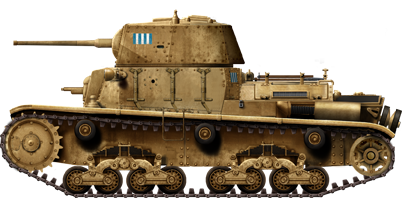
M15/42 as factory delivered in August 1943
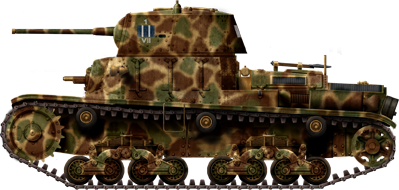
M15/42 of the VII squadron, 1st platoon, Ariete II division near Rome, Septenber 1943.
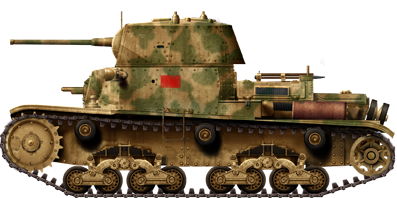
M15/42 of the 13th Armoured Regiment, 135th Cav. Div. Ariete II Rome Sept. 1943
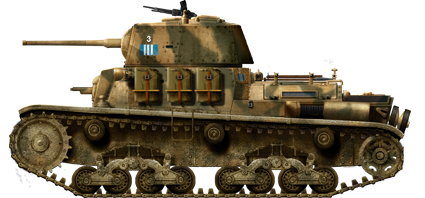
M15/42 of Ariete II, showing its fuel jerrycans, Sept. 1943
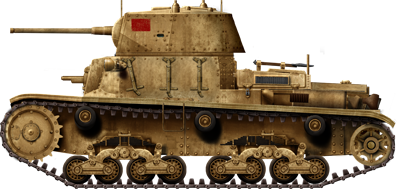
M15/42 of 1st Company, XVIth Batallion, Sardegna winter 1943
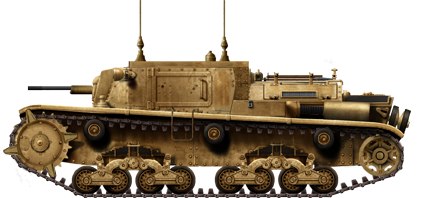
Carro Comando Semovente M42.
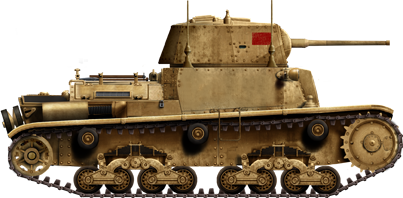
M15/42 Centro Radio, showing the antennae on the other side
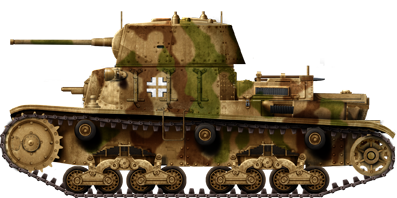
Pzkpfw-M15/42 Fremdengerat 738(i), Gothic Line winter 1944-45
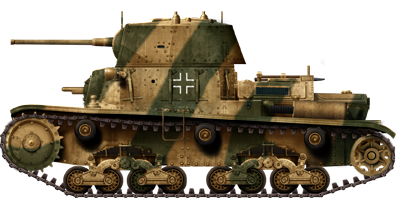
Panzerkampfwagen M15/42 738 (i) in Croatia, summer 1944
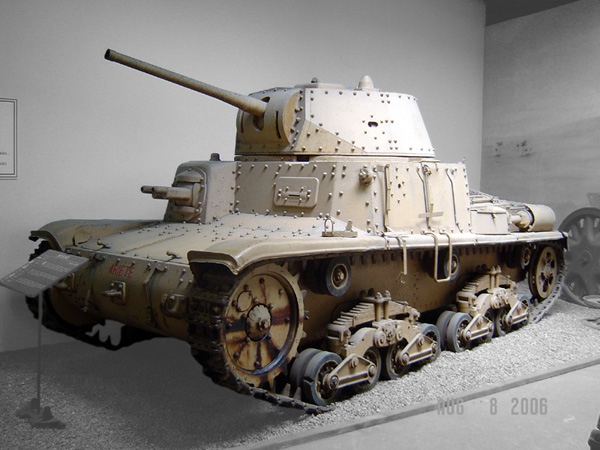
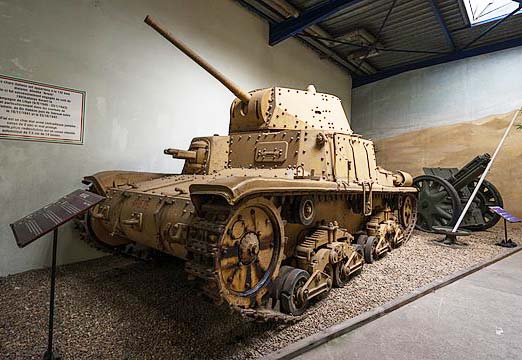
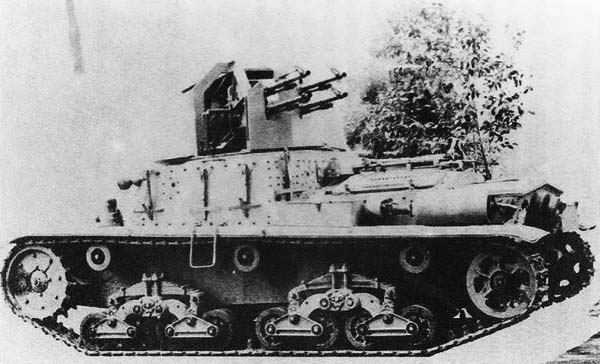
M15 Antiaero
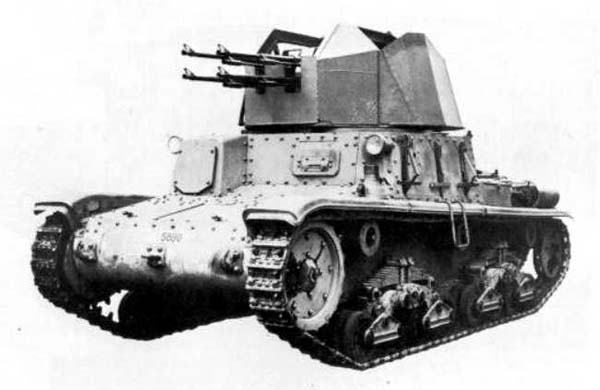
Another view
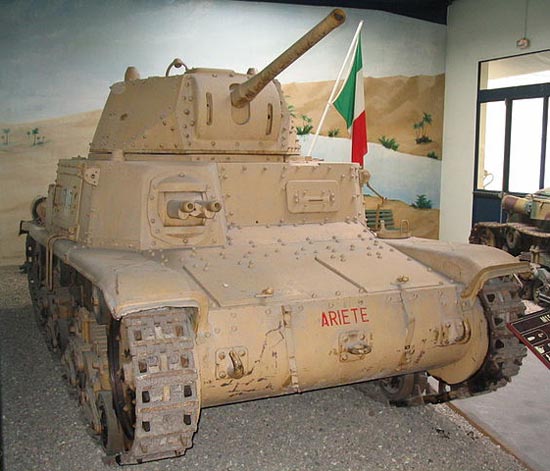
M15/42 at Saumur museum
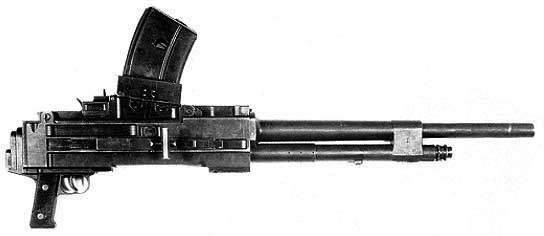
Breda Model 38
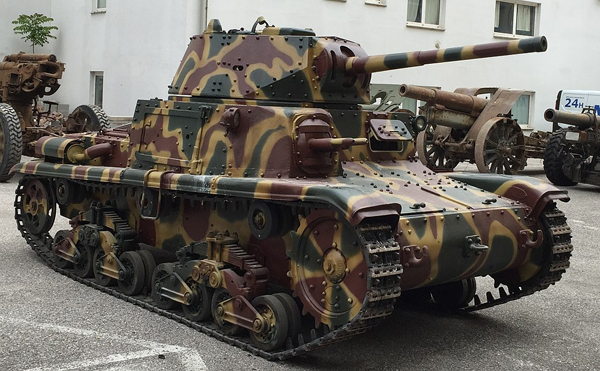
M 15/42 Tank located in Museo Storico Italiano della Guerra - Rovereto - Italy
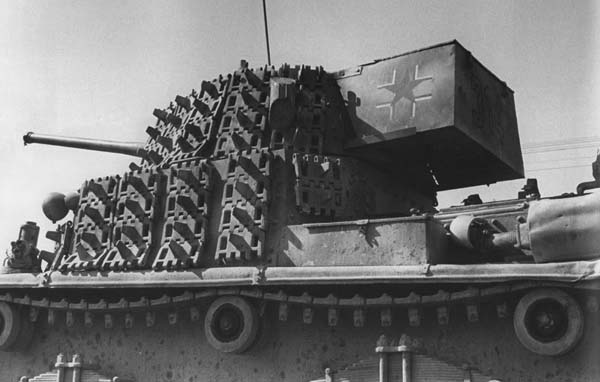
A german "improvized pannier" and addon spare track armor - photo from reddit

WW2 Tanks




























WW2 tanks posters

All Tiger tanks liveries.

Panther liveries and variants

WW2 Armour - All tanks











Tanks aces and single tanks series

Find more there

Museums, Movies, Books & Games
The Tanks and Armor in pop culture
Tanks and armored vehicles in general are only really grasped when seen first person: The mass, the scale, it's all there. Explore also the way tanks were covered in the movie industry, in books and in video games.Movies:
Best tanks movie on warhistoryonline.com
On imdb.com
On bestsimilar.com/
miltours.com
liveabout.com/
watchmojo.com
Video Games:
pcgamesn.com
historyhit.com
levvvel.com
vg247.com/best-tank-games
mmobomb.com/
alienwarearena.com

